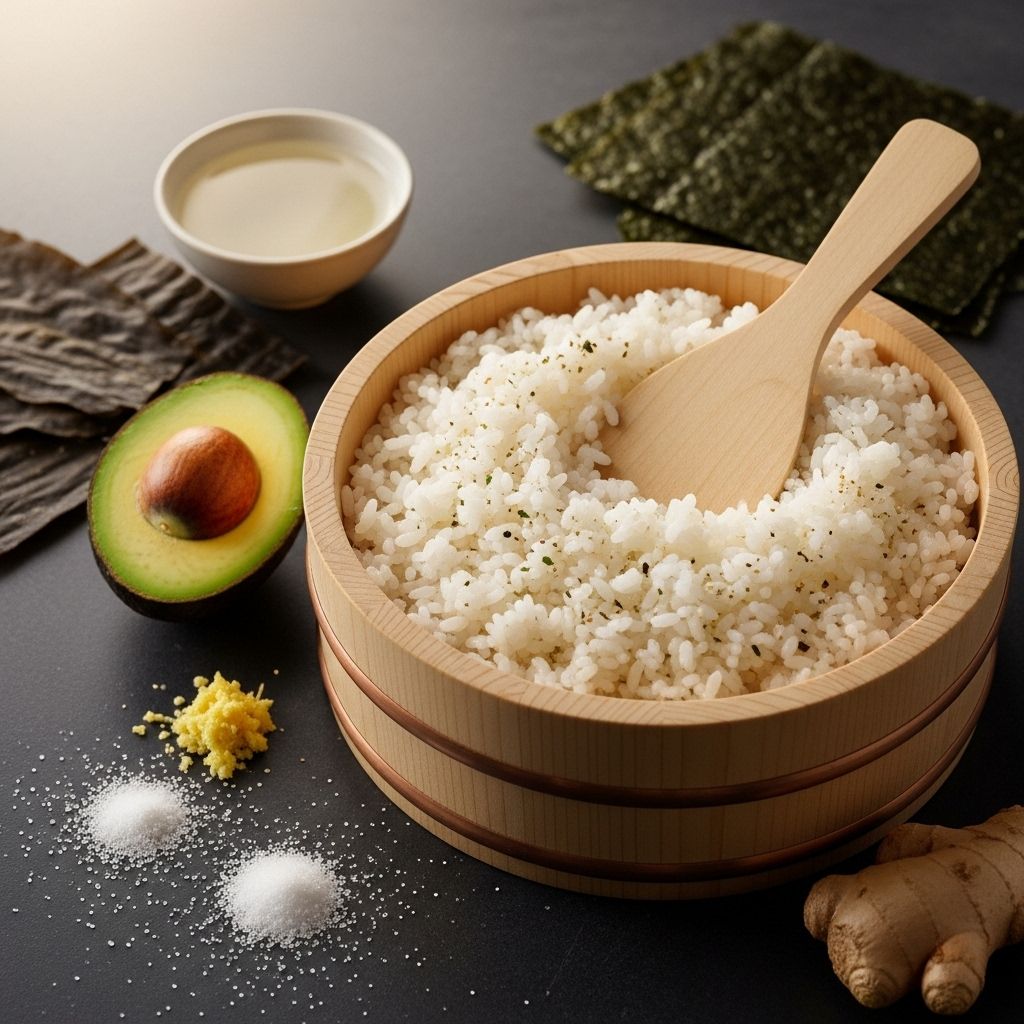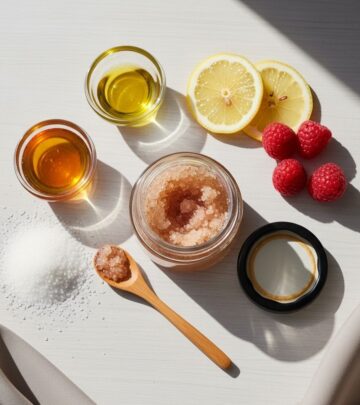How To Make Sushi Rice: Essential Guide For Perfect Texture
Master essential secrets and expert methods to achieve flawless, mouthwatering sushi every time!

Image: HearthJunction Design Team
Perfect Sushi Rice: Tips, Techniques, and Step-by-Step Instructions
Perfect sushi starts with perfect sushi rice. Whether you’re a sushi enthusiast looking to make rolls at home or a home cook interested in Japanese cuisine, understanding how to prepare authentic sushi rice is the essential first step. This guide walks you through the process in detail—from choosing the right rice to seasoning, cooking, and serving—with clear explanations, expert tips, and answers to all your sushi rice questions.
What Is Sushi Rice?
Sushi rice, known as shari or sushi-meshi, is not just a type of rice but a specific preparation method. It combines cooked short-grain white rice with seasoned rice vinegar, sugar, salt, and sometimes a touch of oil. Once the rice is properly seasoned and cooled, it becomes the sticky, flavorful foundation for all types of sushi.
Why Is Sushi Rice Special?
- Texture: Short-grain rice has a naturally higher starch content, which makes it more sticky and creates the ideal consistency for molding and rolling.
- Flavor: The rice is seasoned with a blend of rice vinegar, sugar, and salt, giving it a delicate sweet-sour balance that pairs perfectly with seafood and other classic sushi fillings.
- Versatility: Properly prepared sushi rice can be used in rolls, nigiri, bowls, and creative fusion dishes.
Ingredients for Perfect Sushi Rice
Great sushi rice relies on simple, high-quality ingredients. Here’s what you need:
- 2 cups uncooked short-grain white rice (labelled as “sushi rice”)
- 3 cups water
- 1/2 cup rice vinegar
- 1 tablespoon vegetable oil
- 1/4 cup white sugar
- 1 teaspoon salt
Short-grain Japanese rice is crucial—other types, like long grain or jasmine, won’t achieve the correct texture. Rice labeled as “sushi rice” in stores is ideal for this recipe.
Sushi Rice Seasonings
- Rice vinegar: Provides tang and depth
- White sugar: Balances the acidity
- Salt: Enhances flavor
- Vegetable oil: Adds subtle richness without dominating the delicate flavors
Step-by-Step Guide: How to Make Sushi Rice
Follow this in-depth, foolproof process to achieve sushi restaurant-quality rice at home.
1. Rinse the Rice Thoroughly
- Place the rice in a fine-mesh sieve or bowl.
- Rinse under cold water, swishing with your hand, until the water runs clear.
- This step removes excess starch, preventing the finished rice from becoming gummy or heavy.
- After rinsing, let the rice drain for at least 30 minutes up to an hour for best texture.
2. Cook the Rice
- Combine the rinsed rice and water in a rice cooker or heavy-bottomed pot.
- If using a pot, cover with a tight-fitting lid and bring to a simmer over medium-high heat. Reduce the heat to low and cook for 20 minutes, or until the water is absorbed.
- Let the rice sit, still covered, for another 10 minutes to finish steaming.
- Alternatively, use a rice cooker on the “white rice” or “sushi rice” setting for ease and consistent results.
3. Prepare the Sushi Vinegar Seasoning
- While the rice is cooking, heat the rice vinegar, sugar, salt, and vegetable oil in a small saucepan over medium heat.
- Stir until the sugar and salt just dissolve—do not allow the mixture to boil.
- Remove from heat and let cool to room temperature.
4. Season the Cooked Rice
- Spread the freshly cooked rice onto a large baking sheet or non-reactive wooden sushi tub (hangiri).
- While the rice is still warm, drizzle the vinegar seasoning evenly over the rice.
- Using a wooden spoon or rice paddle (shamoji), gently fold and slice through the rice to incorporate the seasoning without crushing the grains.
- Fan the rice as you mix to cool it quickly and help it develop a glossy sheen.
5. Cool the Rice
- Continue folding and fanning until the rice reaches room temperature.
- Cover with a damp towel until ready to use. Sushi rice is best when used the same day it’s prepared.
Best Rice Types for Sushi
| Rice Type | Texture | Recommended For |
|---|---|---|
| Japanese Short-Grain (Sushi Rice) | Sticky, plump, glossy | All sushi styles (rolls, nigiri, bowls) |
| Medium-Grain Rice | Less sticky, more separate grains | Sometimes used in fusion bowls but not traditional sushi |
| Long-Grain Rice | Dry, non-sticky | Not suitable for authentic sushi |
Always look for labels like “sushi rice” or “short-grain Japanese rice” for best results.
Classic Sushi Rice Seasonings
The trio of rice vinegar, sugar, and salt is the cornerstone of sushi rice’s complex flavor. Some recipes include a piece of dried kelp (kombu) or a splash of vegetable oil for additional aroma and richness, but the focus is always on balancing sweetness, saltiness, and acidity.
Why Vegetable Oil?
This recipe uses a neutral vegetable oil instead of a robust oil, letting the subtle seasonings shine through without overpowering the rice’s delicate flavor.
Different Ways to Cook Sushi Rice
- Stovetop: Traditional and effective, with careful attention to heat and timing.
- Rice Cooker: The most reliable and convenient method with modern appliances.
- Instant Pot: Use the “rice” function and finish as directed above for evenly cooked grains.
Uses for Sushi Rice
Sushi rice, or sumeshi, is more versatile than you might expect. Here are some popular dishes that use it:
- Maki rolls (rolled sushi wrapped in nori)
- Nigiri (formed oblong rice balls with fish or other toppings)
- Hand rolls (cone-shaped sushi)
- Chirashi (scattered sushi bowls)
- Sushi bowls and sushi bakes
- Sushi burritos and fusion creations
- Musubi (Japanese-Hawaiian rice and protein snacks)
- Poke bowls (for a fragrant, slightly sweet base)
Key Tips for Sushi Rice Success
- Rinse rice thoroughly: Removes extra starch for perfect texture.
- Don’t skip the resting period: Let rice sit after cooking to finish steaming through.
- Season while warm: Rice absorbs vinegar mixture best when slightly hot.
- Fold, don’t mash: Create glossy, intact grains by using a slicing and folding motion when mixing seasoning.
- Keep covered with a damp cloth: Prevents rice from drying out before using.
Common Sushi Rice Mistakes (and How to Avoid Them)
- Using the wrong rice: Always opt for short-grain or “sushi rice”.
- Skipping the rinse: Leads to heavy, gummy rice.
- Overcooking or undercooking: Follow time and water ratios closely, and allow for resting after cooking.
- Adding vinegar to cold rice: Season while hot for even absorption.
- Storing sushi rice in the fridge: Sushi rice should be used fresh; refrigeration changes the texture.
Variations: Flavorful Twists and Enhancements
- Kombu (Dried Kelp): Add a strip while cooking for umami depth (remove before seasoning).
- Mirin: Substitute a portion of the sugar for mirin, a sweet cooking rice wine, for extra aroma.
- Toasted Sesame Seeds: Sprinkle over finished rice for nutty flavor (especially in fusion rolls).
- Brown Sushi Rice: For a healthier twist, cook short-grain brown rice and season as above, but expect a chewier texture.
Serving Suggestions
- Let the rice cool to room temperature before forming sushi to prevent nori from wilting and filling from cooking.
- Use freshly made rice for best taste and stickiness.
- Keep a small bowl of water mixed with rice vinegar nearby to dampen your hands when shaping sushi—this prevents rice from sticking.
Storage Tips
- Sushi rice is best enjoyed the day it’s made.
- If you have leftovers, store covered at room temperature and consume within a few hours.
- Avoid refrigeration, as cold air dries out the rice and makes it hard.
Frequently Asked Questions (FAQs)
What is the difference between sushi rice and regular white rice?
Sushi rice is made from short-grain Japanese rice and seasoned with a specific vinegar-sugar-salt mixture. Regular white rice uses longer grains and is not seasoned the same way, resulting in a different texture and flavor .
Can I use any type of vinegar for sushi rice?
Rice vinegar is recommended for its mild, slightly sweet taste. Substituting with white vinegar or apple cider vinegar will change the flavor and acidity profile of the finished rice.
Why does sushi rice need to be so sticky?
The stickiness is crucial for forming sushi shapes—whether rolls, nigiri, or hand rolls—so the rice holds together without falling apart.
Is it necessary to use a wooden tub to mix the rice?
While a wooden hangiri is traditional and helps absorb excess moisture, a large bowl or baking sheet works well for home cooks. The key is to spread the rice thinly for proper seasoning and cooling.
Can I make sushi rice in advance?
Sushi rice is best prepared fresh. However, you can make it a few hours ahead and keep it covered with a damp towel at room temperature. Avoid refrigerating, as this will cause the rice to become dry and hard.
How do I prevent sushi rice from sticking to my hands?
Dampen your hands with water mixed with a little rice vinegar before handling the rice. This keeps it from sticking and makes forming sushi easier.
Conclusion: Mastering Sushi Rice at Home
With a little patience and the right ingredients, anyone can make perfect sushi rice in their own kitchen. From rinsing to seasoning and serving, each step is vital for achieving that signature taste and texture found in your favorite sushi restaurants. Practice these techniques, experiment with different sushi styles, and enjoy the endless possibilities of Japanese cuisine at home. Happy sushi-making!
References
Read full bio of Srija Burman












